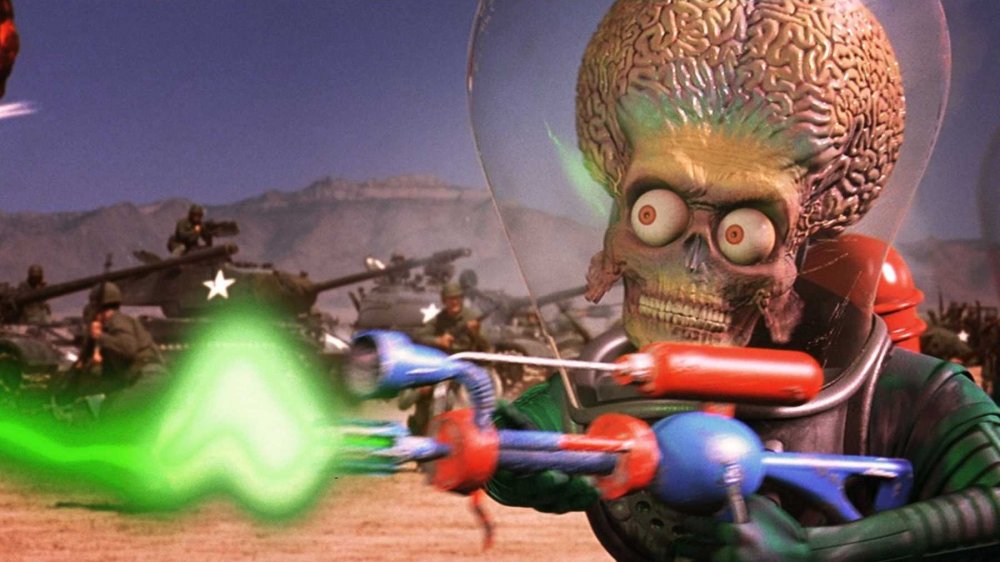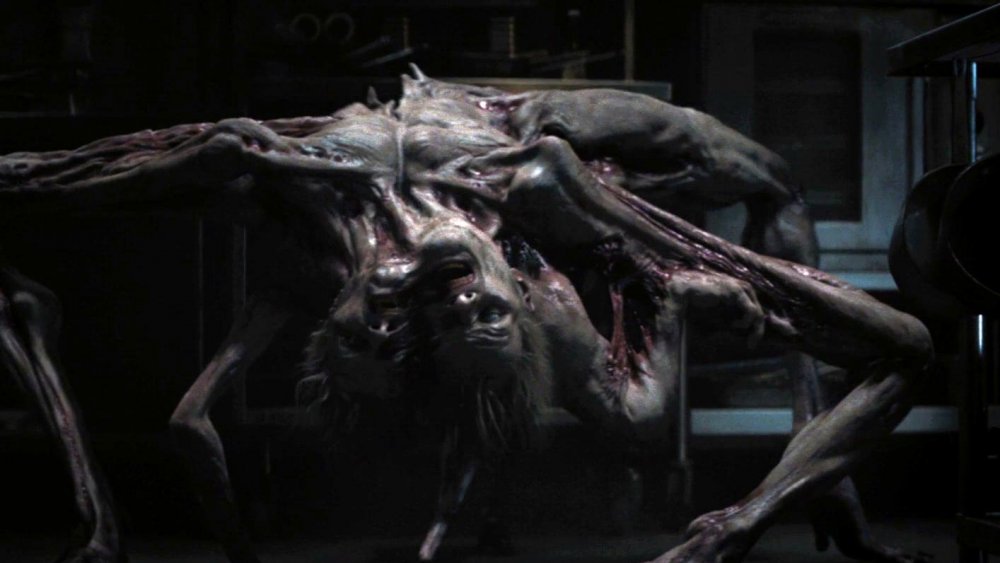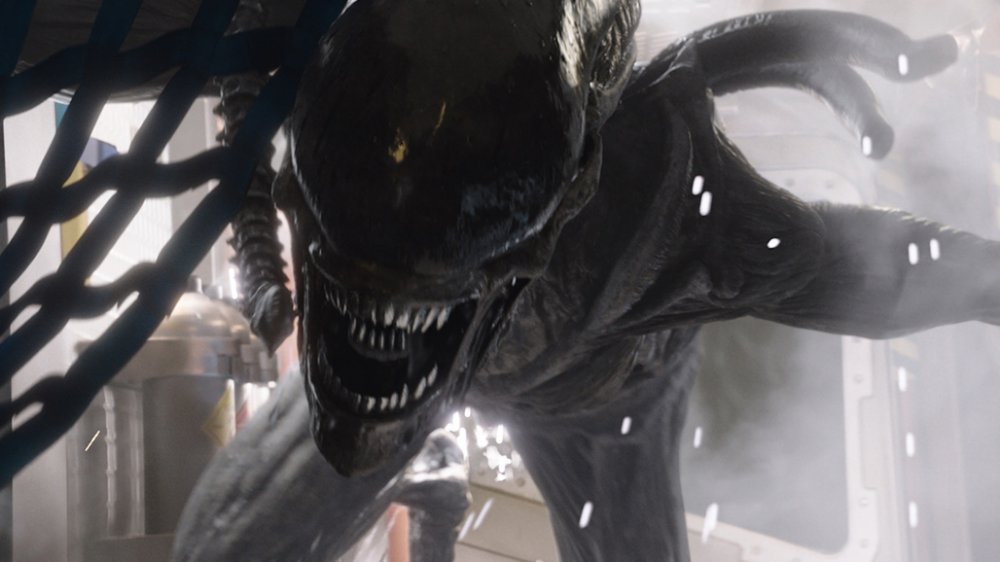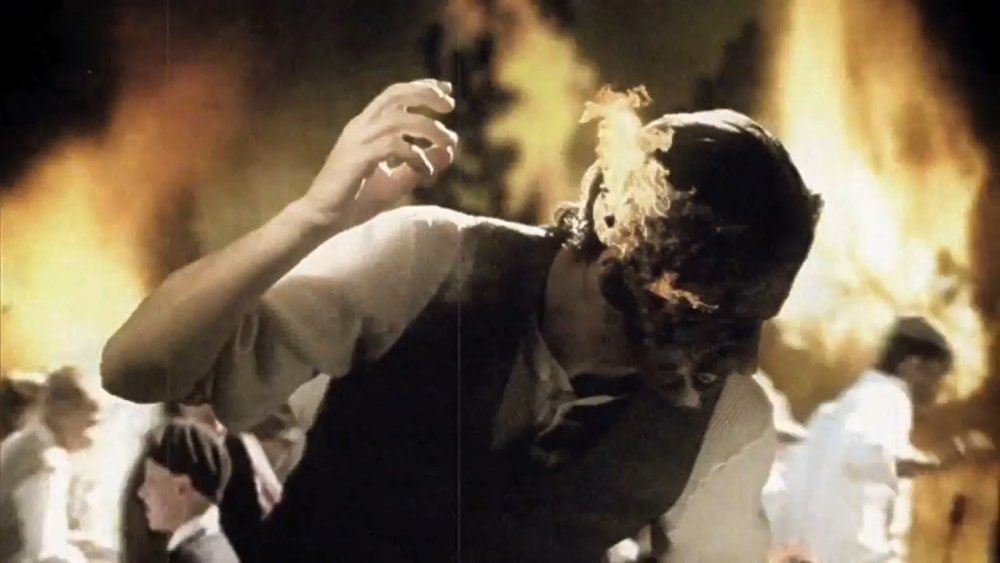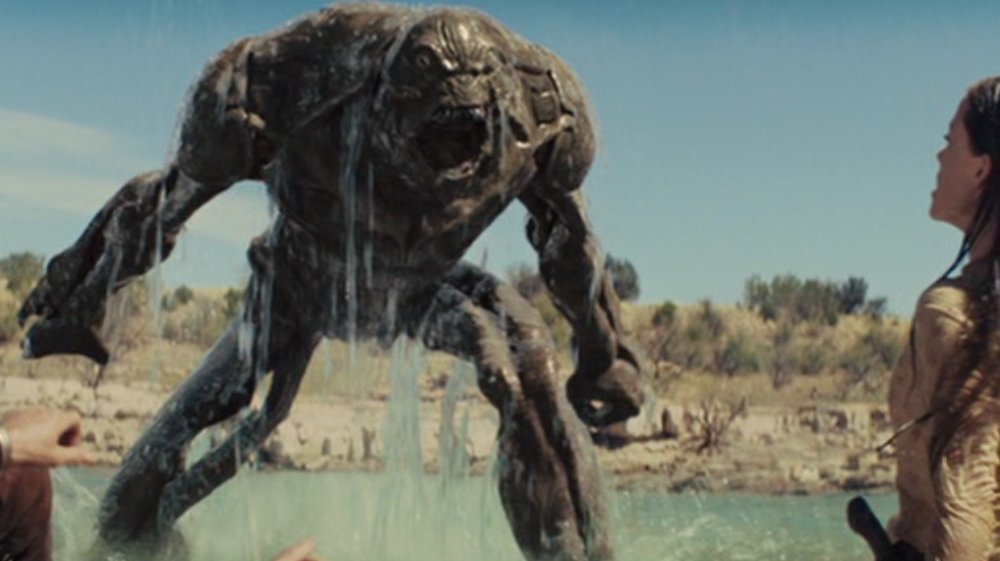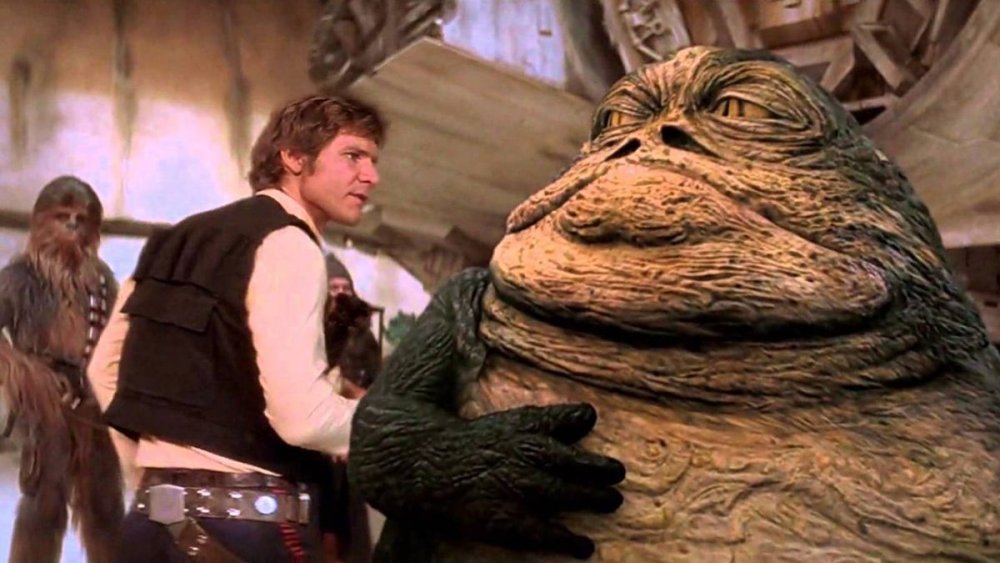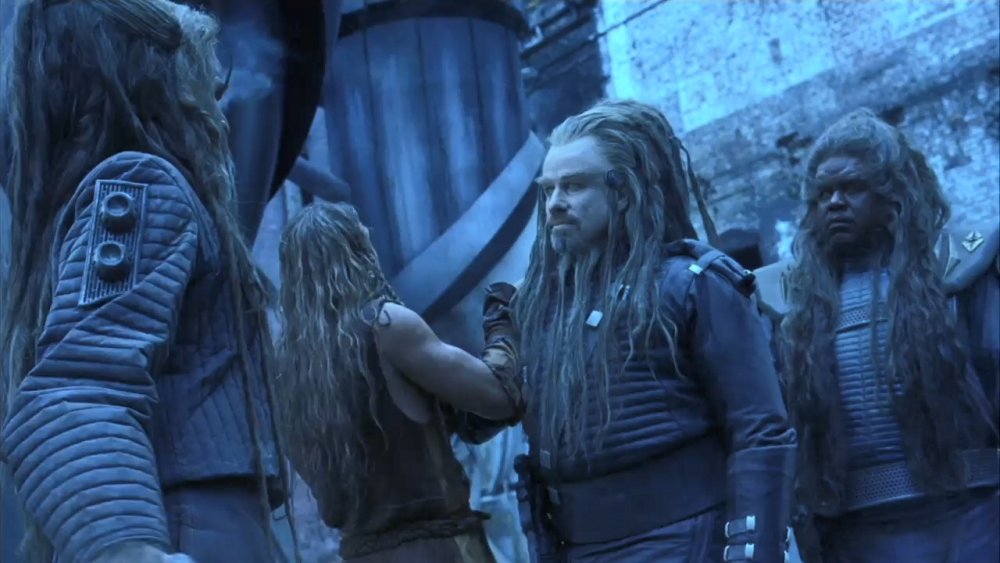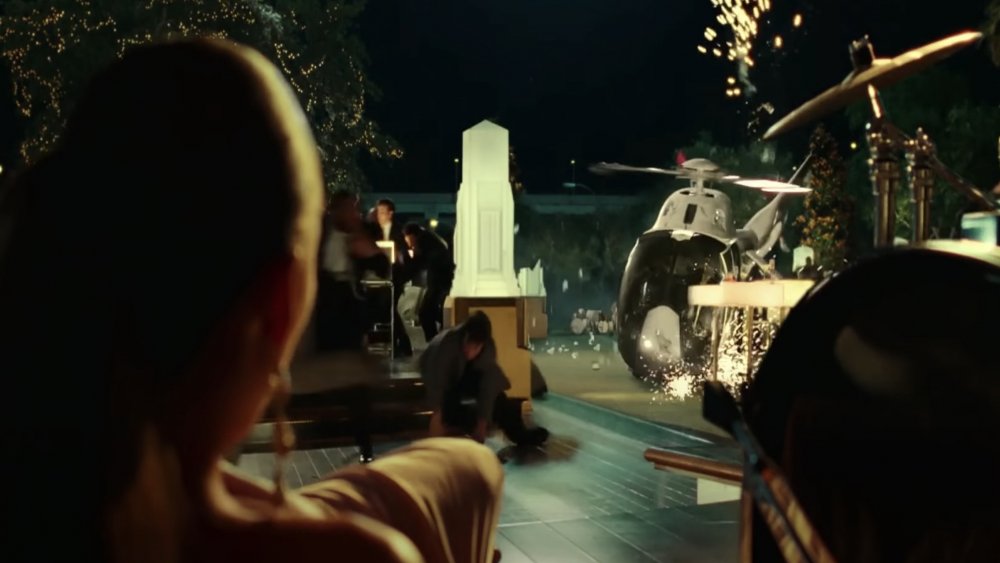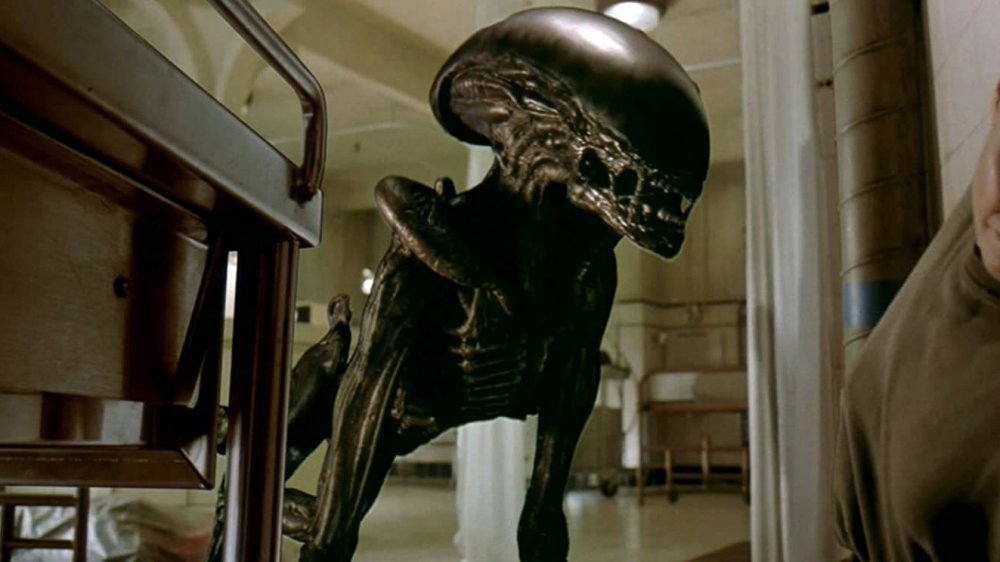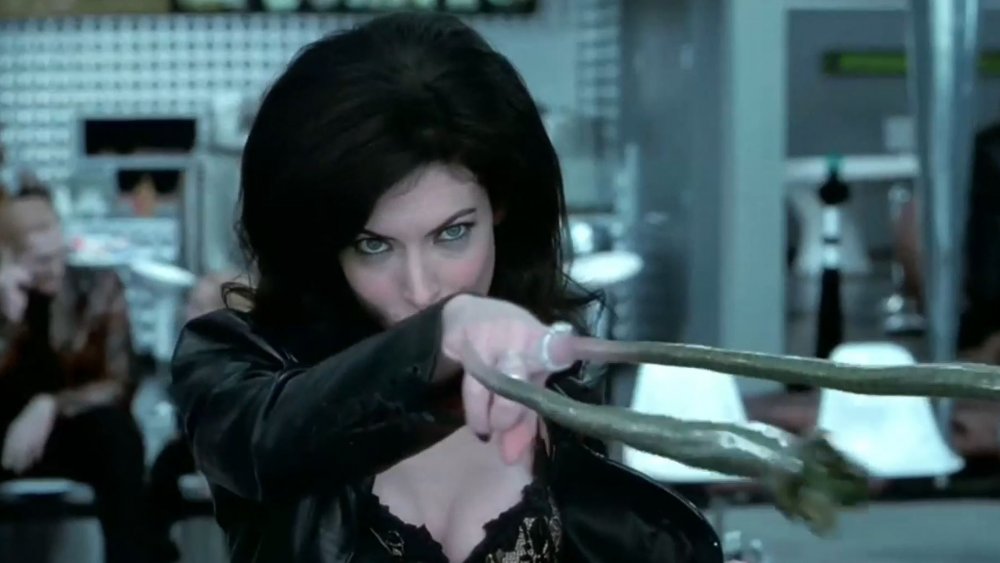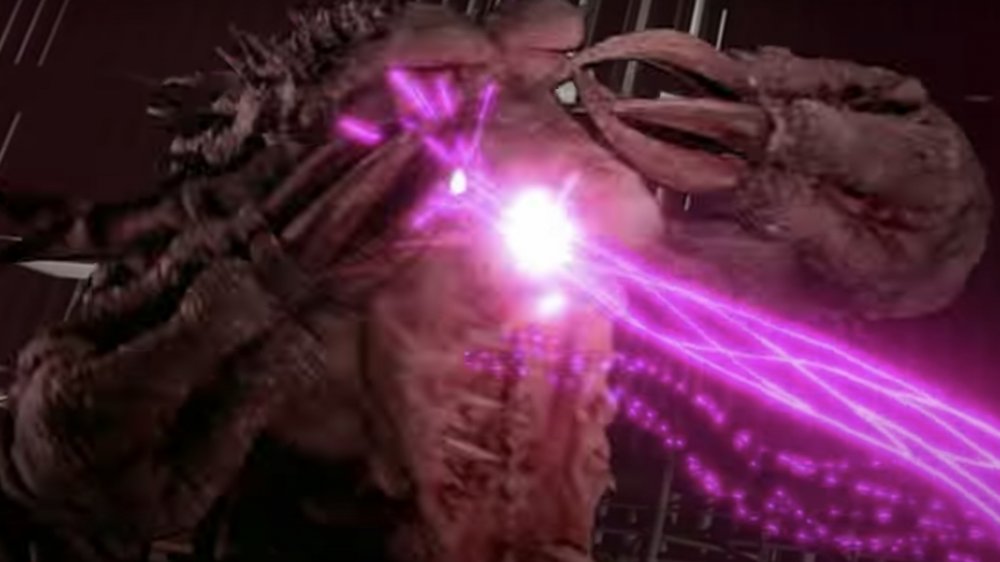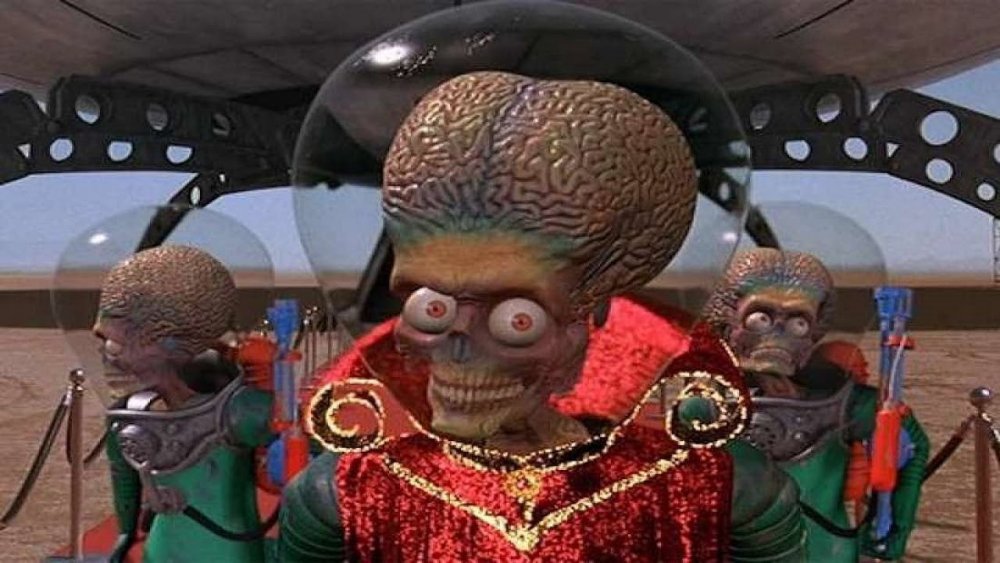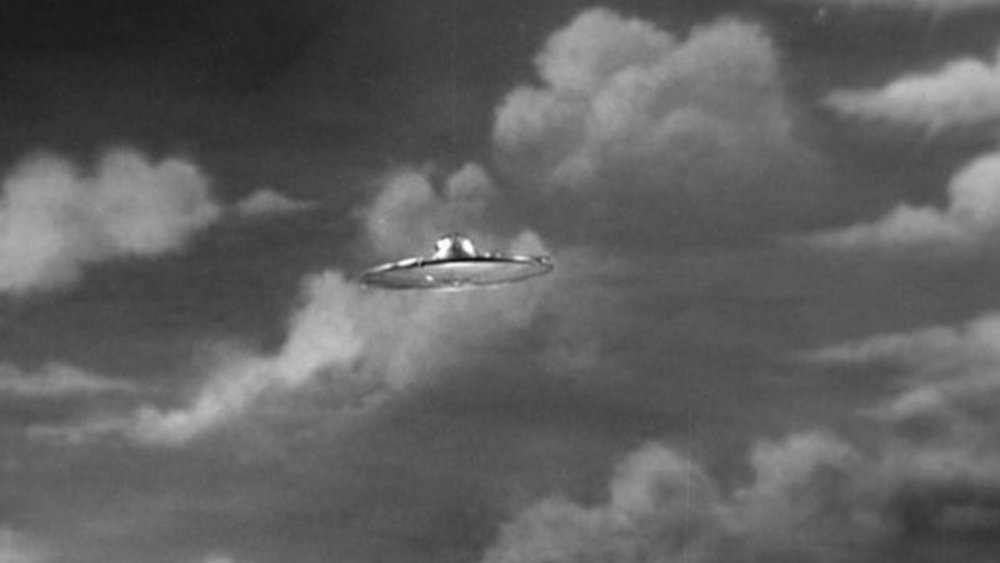Terrible Special Effects In Popular Alien Movies
Aliens have served many different purposes in films throughout the years. Klaatu in The Day the Earth Stood Still helped show what it might take for humans to band together and face an unknown foreign threat. The xenomorphs of Alien show just how frightening and deadly those threats could be. District 9 used its prawns to demonstrate how humans can be just as monstrous as the aliens of the classic film canon. However, these renowned tales aren't just the products of clever writing or outstanding performances.
In order to pull off the genre's themes and otherworldly aesthetics, science fiction has always had to rely on special effects. And when those special effects don't turn out well, it can rob the extraterrestrials on the screen of their celestial mystique. Sometimes a poorly handled special effect is contained to a specific scene or momentary lapse in quality. Other times, these effects are enough to ruin a whole film. In rare cases, bad special effects can be so captivatingly out of place that the film obtains a loyal cult following. Here's a list of terrible special effects from alien movies that will leave even the most avid of science fiction fanatics disappointed.
The Thing (2011)
Though acclaimed filmmaker John Carpenter's The Thing was greeted by unfavorable critical reviews during its theatrical run in 1982, the film's reputation has only become more positive over the years, earning a cult fandom among horror and sci-fi fans alike. Currently, it boasts an 84% critical score on Rotten Tomatoes and is Certified Fresh. This is in large part due to the film's masterful practical effects, which go a long way toward enhancing the chilling story while making The Thing a true spectacle to behold.
But where the original film's exceptional attention to detail shines, the 2011 prequel completely misses the mark on the visual front. This chapter, also titled The Thing, casts aside practical effects and tricks with makeup in favor of an overdose of CG. The biggest offender is the extraterrestrial villain, which never quite manages to mesh with the film's environments. This makes the whole thing pretty hard to sit through even if viewers find the acting, music, or cinematography is to their liking. After all, it's hard to take the movie seriously when the main antagonist is supposed to be horrifying but instead looks like something out of a bad PS4 game.
Alien: Covenant
According to Box Office Mojo, director Ridley Scott's return to the Alien franchise in 2012 with Prometheus was a significant financial success, earning just over $400 million worldwide against a $130 million budget. In the follow-up, Alien: Covenant, the crew of the Covenant lands on an unfamiliar planet to make repairs. Of course, it turns out that the planet is crawling with hostile alien life that is itching to tear the crew apart. The best part about the Alien franchise is the aliens. However, Alien: Covenant's aliens definitely lack the polish that previous entries in the series boasted. These CG rendered beasts are inconsistent in quality. In some instances, the visual effect is passable, but in others, the animation is choppy with low-quality 3D models.
Throughout the film, it's hard not to reflect on earlier entries in the franchise for comparison, especially during the relatively uninspiring action sequences featuring Covenant's Xenomorph. Again consulting figures from Box Office Mojo, one interesting point of comparison is that Covenant had roughly $33 million less in its budget than Prometheus. That budget discrepancy shows that while sometimes less is more, other times less is just less.
War of the Worlds: The True Story
War of the Worlds: The True Story is a documentary-style film that interviews the last living survivor of the Earth Mars War. Utilizing supposedly declassified footage and reenactments, the story recounts the gritty battle and the human casualties that ensued from the alien attack.
Though the Los Angeles Times praised the film for its editing and clever use of archival footage, that's just about where the compliments end. The special effects are both lackluster and exceptionally cheesy, making it a bit difficult to take the Earth Mars War very seriously. As the aliens go around vaporizing humans, awkward-looking beams of light incinerate fleeing civilians zapping anything they touch out of existence. Flames and burning flesh are laughably bad. However, the unconvincing compositing that places modern actors into old footage or strange environments takes the cake as the worst bit of editing.
While War of the Worlds: The True Story may have tried to mimic the real terror spurred on by the 1938 broadcast of H.G. Wells' War of the Worlds, the film doesn't have anywhere near the same emotional impact. In contrast, it feels like a DVD you'd find at the bottom of a dollar store bin.
Cowboys & Aliens
After the success of Iron Man and Iron Man 2, director Jon Favreau decided to take a break from superhero films and simultaneously tackle two seemingly disparate genres at once with 2011's Cowboys & Aliens. The film stars Daniel Craig, Olivia Wilde, Clancy Brown, and Paul Dano as the titular cowboys who have to fight off a ship of invading aliens in the year 1873. But the other stars of the film weren't portrayed by actors so much as they were supplied by Industrial Light & Magic, who handled the film's special effects.
In an article from FX Guide, the film's visual effects supervisor, Roger Guyett, talked about all of the effect work that went into making the aliens. It's just too bad that the $163 million that IMDb reports went into the film didn't add up to a more engaging creature for audiences to root against. The Globe and Mail described the aliens as "distinctly non-scary things... straight from central casting." The darn things just looked like generic extraterrestrials, and not particularly lifelike ones at that.
Not all of the movie's problems stem from the rendering of the special effects, though. Sometimes the issue is also how they were incorporated into the film. Slate's review criticized how this affected the suspension of disbelief, saying, "this is still a movie that expects you not to laugh when a horse keeps pace with a flying saucer."
Star Wars: A New Hope (20th Anniversary Special Edition)
Released in 1977, the first Star Wars movie won people over with its charming characters, exciting story, stunning musical score, and unparalleled world-building. One of the most unique and captivating aspects of the film are the designs for its plethora of alien species that populate the galaxy far, far away.
However, to celebrate the film's 20th anniversary, director George Lucas decided to use computer graphics to touch up scenes millions of fans already knew by heart. According to the documentary Empire of Dreams: The Story of the Star Wars Trilogy, after helping develop the technology for the effects in Jurassic Park, Lucas "concluded that digital technology had finally caught up to his original vision." Finally, he would be able to create aliens the way he had always thought they should look. Using the best computer graphics that Hollywood could muster in the mid-'90s, some of the practical alien effects were replaced with computer graphics, much to audiences' dismay. The resulting creatures make even Jar Jar Binks look like something akin to James Cameron's Avatar.
Battlefield Earth
Battlefield Earth is a marvel of filmmaking, but in the absolute worst way conceivable. Putting aside the film's senseless direction and rough storytelling, it's just an unpleasant piece of media to experience all around. The world it takes place in feels dull and devoid of character, and the wonky CG adds a level of further blandness to an already lifeless sci-fi flick.
Regarding the visual effects, one of the more notably bad examples surfaces when characters transport, triggering an odd shimmering effect that looks as if it was ripped out of a Star Trek movie from the '80s. The film's digitally crafted alien atrocities are enough to make any moviegoer question the art of cinema, but perhaps the most egregious example of terrible special effects is seen at the end of the film. In the closing shot, John Travolta's character is trapped in a poorly executed CG cage inside of a digitally rendered Fort Knox, which serves as a sadly unintentional metaphor for how audiences feel while watching Battlefield Earth.
Green Lantern
As Marvel was four films deep into Phase One of the MCU in 2011, DC was still releasing single-hero standalone adventures without any extended universe. And with the release of Green Lantern, DC fans were likely thankful for that. In the film, Hal Jordan is a cocky fighter pilot who has his life forever altered when an alien crash lands on Earth and promptly dies — but not before giving Hal his Green Lantern ring, imbuing him with the power of the interplanetary group of peacekeepers known as the Green Lantern Corps. Using his willpower and the ring's energy, Hal is able to create anything he can imagine. However, while some aspects of the film look fine, such as the aliens and the CG environments, elements like the ring's creations and more mundane special effects helped sink this box office flop.
While the sequences taking place in space look nice enough, the Earthbound scenes don't stack up. In one example, a helicopter crashes into a wedding Hal is attending. While it's clear that the effects artists paid the aliens and celestial environments a bunch of attention, it was clear that the helicopter, which at times looks like CG from the early-to-mid 2000s, was not as much of a priority.
Alien 3
While the first two entries in the Alien franchise are certified classics, subsequent installments have had a rougher go of it with fans and critics — and Alien 3 is a prime example of this principle in action. While this is due to a few different factors, such as a weak narrative and script, many viewers were specifically disappointed by Alien 3's extraterrestrial predators.
Though the alien in Alien 3 is often mistaken for bad CG, this is not precisely the case. The creature was actually crafted using a rod puppet and a man in a suit. The rod puppet was filmed in front of a bluescreen and then later composited into the footage. This technique is where the confusion regarding CG stems from, as the compositing makes the alien appear digitally altered and out of place.
However, there are also some poor examples of CG scattered throughout the film. This is most noticeable in Alien 3's final act when the alien exits the water, prompting a laughable excuse for CG water to splash around the creature. Another example is when then the alien's head cracks and glows bright orange just before exploding. While the film's deficient visual effects aren't what doomed Alien 3, they certainly didn't do it any favors.
Men in Black II
In Men in Black II, the sequel to the 1997 Oscar-winning original, the script gets flipped, and Will Smith plays the battle-worn veteran who reintroduces his memory-wiped former partner, played by Tommy Lee Jones, back into the titular organization. All of this happens because a new threat comes to Earth in the form of Serleena, a plant-like alien that shape-shifted to look like a Victoria's Secret model to accomplish her goal of subduing the Men in Black to get her hands on The Light of Zartha. Agent K is the only human who may be able to figure out what the Light is and get to it before Serleena wraps her tendrils around it.
Several CG aliens throughout the film just look off, such as the worms and the aliens that Will Smith's character finds in a train station locker. Even the main villains aren't exempt from janky special effects. Throughout the film, Serleena's minion, a two-headed oaf named Chad/Scrad, looks off due to Chad's second head never moving naturally. To boot, Serleena's plant-like tendrils always have an air of cheap plasticity whenever they're used.
Howard the Duck
Be it because of the bizarre premise or the uncomfortable practical effects, it's not exactly hard to see why Howard the Duck has earned the unfortunate reputation as one of the worst films of all time.
In the film, Howard, an alien with the appearance of an anthropomorphic talking duck, finds himself catapulted from his home planet of Duckworld onto planet Earth. While Howard isn't exactly a threat to humanity, he still manages to be one of the most unsettling extraterrestrial characters ever to grace the big screen, arguably even worse than a flesh-hungry xenomorph. Howard's design was brought to life through puppets, costumes, and an elaborate animatronic suit. At best, the result of these efforts is deeply unappealing. At worst, Howard looks like the galaxy's ugliest duckling.
Putting aside Howard's overall look, the film's visual effects leave little to be desired as well. One of Howard the Duck's more notably ridiculous scenes involves a cheesy, laser-filled stand-off that was painfully outdated even by '80s standards. While the film has gained a cult following over time, the charming strangeness can't save Howard from its lack of compelling visuals and designs.
Mars Attacks!
Director Tim Burton's Mars Attacks! is a dark comedy that affectionately hearkens back to a slew of low-budget 1950s alien invasion flicks, which partially explains the distracting designs of the film's alien creatures. In particular, the CG Martians are horribly off-putting — by which we mean they look cheap, especially when standing next to the human actors. Their creepy design and unnatural movements are pervasive throughout the entire film, meaning you never really get much of a break from the visual eyesore.
Initially, Burton had wanted the Martians to be created using stop-motion effects. However, the film's budget was slashed, according to Den of Geek, and as a result, it was decided that the Martians would be brought to life using CG instead. While this may have saved the studio some money, it's debatable whether the trade-off was worth it when looking at the end result. In the end, Mars Attacks! definitely suffers from its subpar visual effects — although whether intentionally or not, the dated aesthetic does ultimately sort of add to the B-movie feel that Burton was trying to emulate in the first place.
Mars Attacks! used its campy script, star-studded cast, and unique visual stylings to endure in popular culture as a cult so-bad-it's-good film. Its popularity has persisted enough to fund a Kickstarter project in 2020 that sets out to revive the trading cards that the film was originally based on.
Plan 9 from Outer Space
In 1980, Harry and Michael Medved published The Golden Turkey Awards, famously dubbing Ed Wood's 1957 Plan 9 from Outer Space the worst film of all time and Ed Wood the worst director. While some, like Film School Rejects, disagree with this characterization of the director and the film, it cannot be denied that Plan 9 from Outer Space is not a visual marvel, no matter when it was made.
The film is about aliens who want to keep humans from constructing a weapon that could destroy the entire universe. They decide to use their technology to raise the dead, hoping that reanimated corpses will shock people into listening to the aliens about the dangers of such a weapon — or kill humanity in the process.
In discussions surrounding Plan 9 over the years, many people tend to focus on the effects, the most infamous being Wood's flying saucers, which some have speculated were made out of paper plates or hubcaps. The truth isn't much more impressive: According to the documentary Flying Saucers Over Hollywood: The 'Plan 9' Companion, Ed Wood achieved UFO liftoff by purchasing a few toy models and hoisting them into the air on strings or bits of wire.
